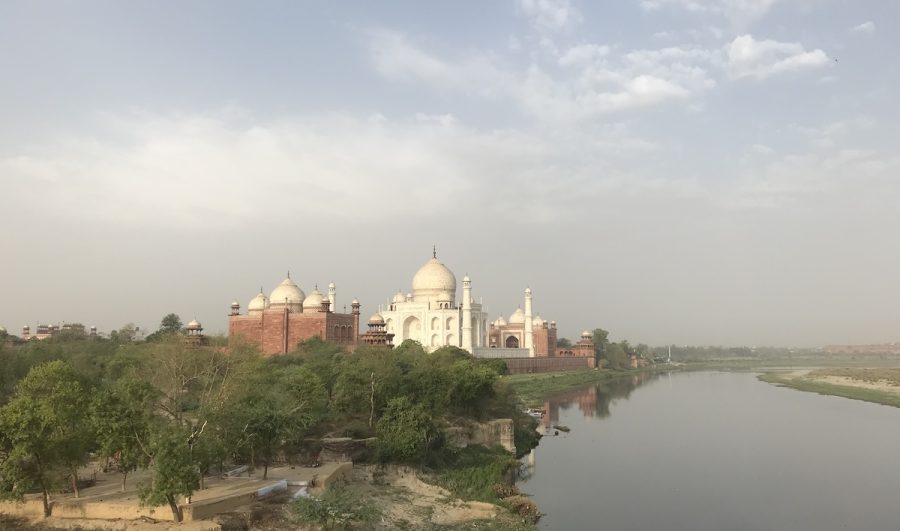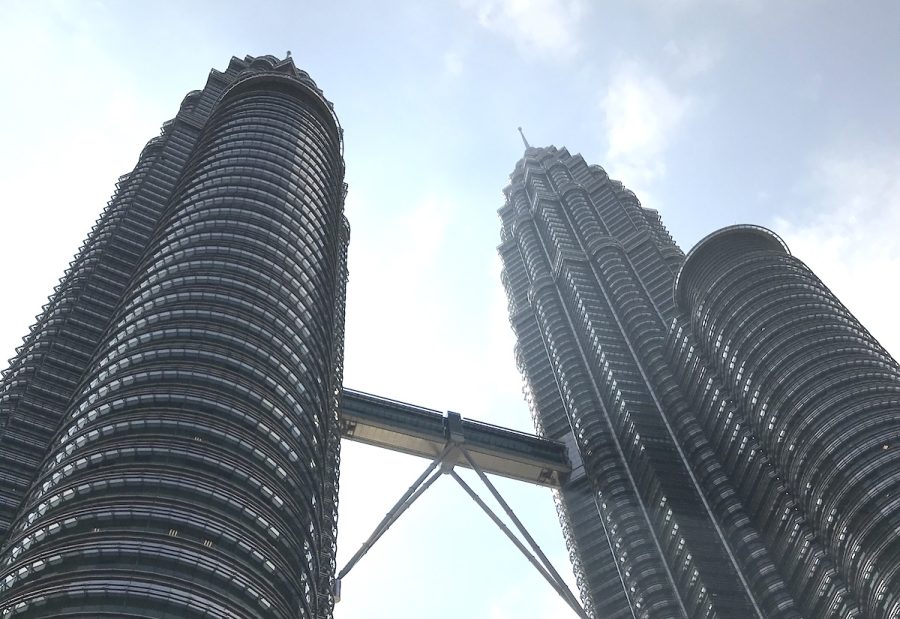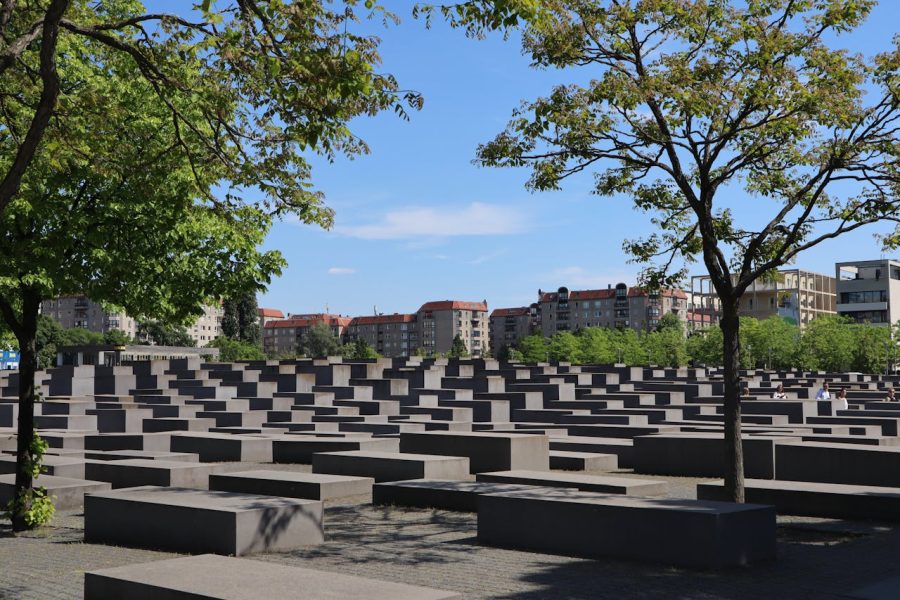The Taj Mahal is one of the seven wonders of the world and one of the most desired monuments in the world. It is located in the bustling city of Agra in India. Made of sparkling white marble glowing in the yellow sun, the Taj Mahal is a feast of kinds of ornate and perfect symmetry. It was commissioned in the name of the Mughal emperor Shah Jahan’s wife, Mumtaz Mahal. It took more than 20,000 craftsmen some 20 years to build this majestic monument.
History
It is not just the beauty of the architecture that draws so many to the Taj Mahal. People come to witness the story behind the Taj. The story of a sensitive and loving husband who was so struck by his wife’s beauty that he vowed to immortalise her in stone so he could see her for all time.
As you walk through the mausoleum and gardens, you can feel the human emotion radiating from the walls made of marble.
Created in 1632, the Taj Mahal is a monument both made from emotional extremes – love and loss. When Shah Jahan’s fourth wife Mumtaz Mahal died during the birth of their 14th child, he vowed to erect the most beautiful monument in her memory.
His grand design took form under the supervision of a slew of architects, artisans and craftsmen over the course of 20 years. Utilising the finest materials from the farthest reaches of the empire. The Taj Mahal was constructed out of white marble brought from Makrana in Rajasthan, and boasts precious stones sourced from further abroad.
Majestic Architecture
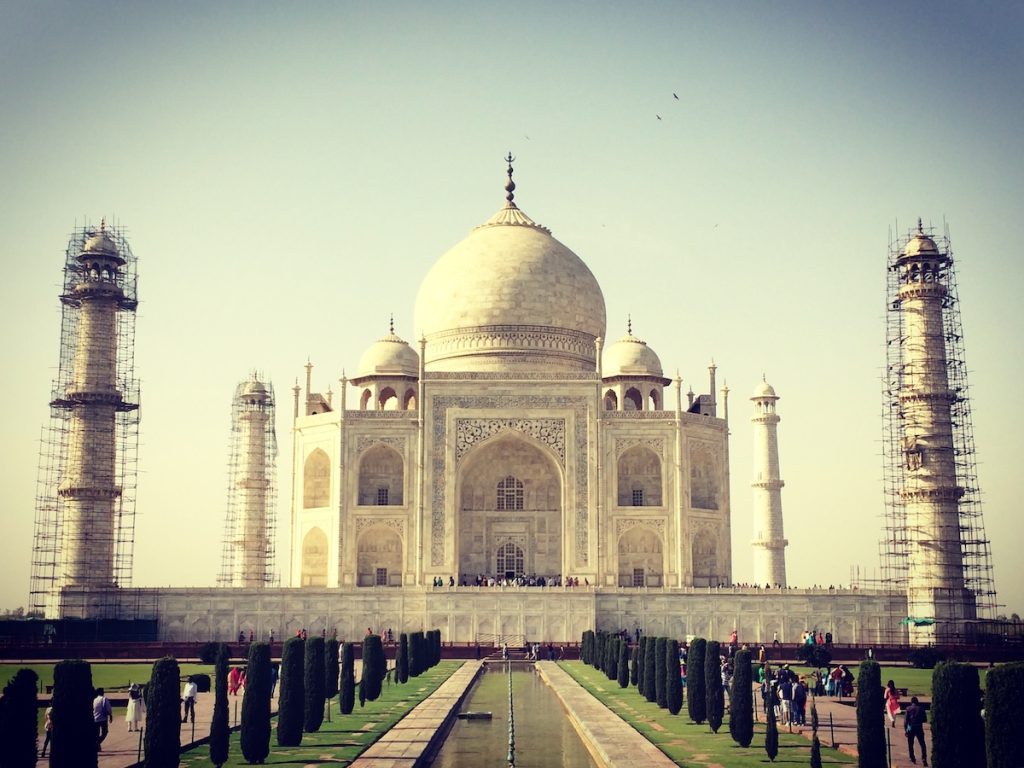
The Taj Mahal is a quintessential Mughal building, with its combination of Persian, Islamic, Turkish and Indian features all integrated seamlessly into a unified whole. Its plan, ornamentation of marble and textile carvings and precious stones reveal the craftsmanship of hundreds, and probably thousands, of artisans who spent decades creating the monument. The gleaming white marble, brought from hundreds of miles away in mountainous quarries to the river banks of northern India, highlights its otherworldly beauty.
The central element of the Taj’s design is a deep symmetrical balance. On either side of the mausoleum are identical structures. You could literally take one half of the main entryway and put it on the other. Mirroring the centre of the plaza are identical minarets. You’ll find everything in pairs, carefully arranged to give the monument visual weight.
In the midst lies a traditional layout of a four-part garden, a charbagh, separated by reflecting pools and walkways into four pleasantly reflecting squares. The garden is lined with trees, stuffed with flowers and laid out with water channels. The watercourses symbolize the four rivers of paradise in the Quran. This symmetrical composition represents a paradise garden and mirrors Islamic architectural concepts.
The garden enhances the beauty of the Taj Mahal. But more than that, it is an unstated story for the enduring timeless love of Shah Jahan and Mumtaz Mahal.
The Taj Mahal’s mystical charm is enhanced through delicate inlay work on marble and precious stones. At each corner of the building’s main venue are four slightly inclined minarets that stand as reinforcements against earthquakes.
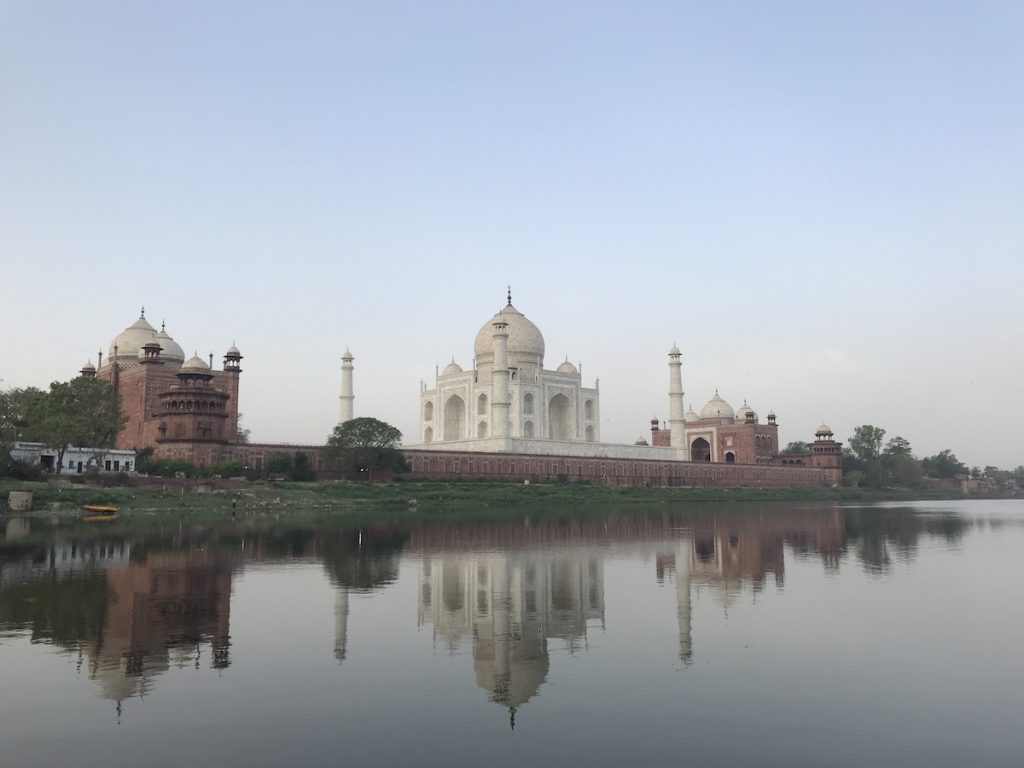
The central dome is the most iconic feature of the monument. It is topped by a gold-tipped finish and enriched with arabesque and Quranic scripts that give it both formal scale and a particular religious significance. The dome pierces the heavens to engulf the imperial couple’s cenotaphs, placed on a raised baldachin and framed by ornamented marble screens. Also, delicate calligraphy from the Quran graces both entryways and walls that contributes to its spiritual significance among people who visit this monument.
Every single aspect of the Taj Mahal’s architecture has some symbolic representation behind it. For instance, perfect symmetry denotes equilibrium in nature while complex geometric patterns communicate divine orderliness.
If you are planning, tickets to visit the monument can be purchased using this link.
Even in a world full of architectural gems, the Taj Mahal stands out as a North Star for mastery and innovation of design, both perfectly organised and executed. From its magnificent marble mausoleum set at the centre of its axis surrounded by its symmetrical gardens to its intricate carvings in its marble screens. It is clear why this building holds such precious meaning and why its beauty might render it timeless.

